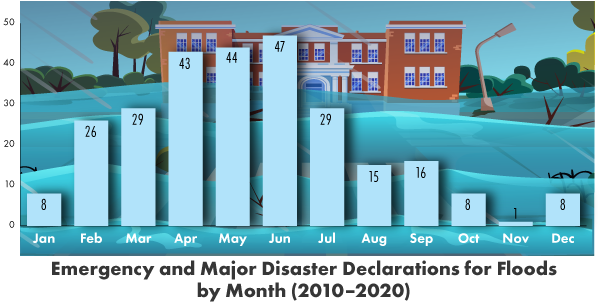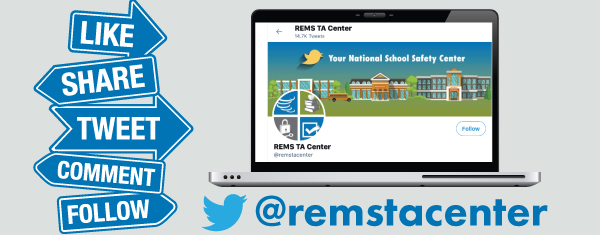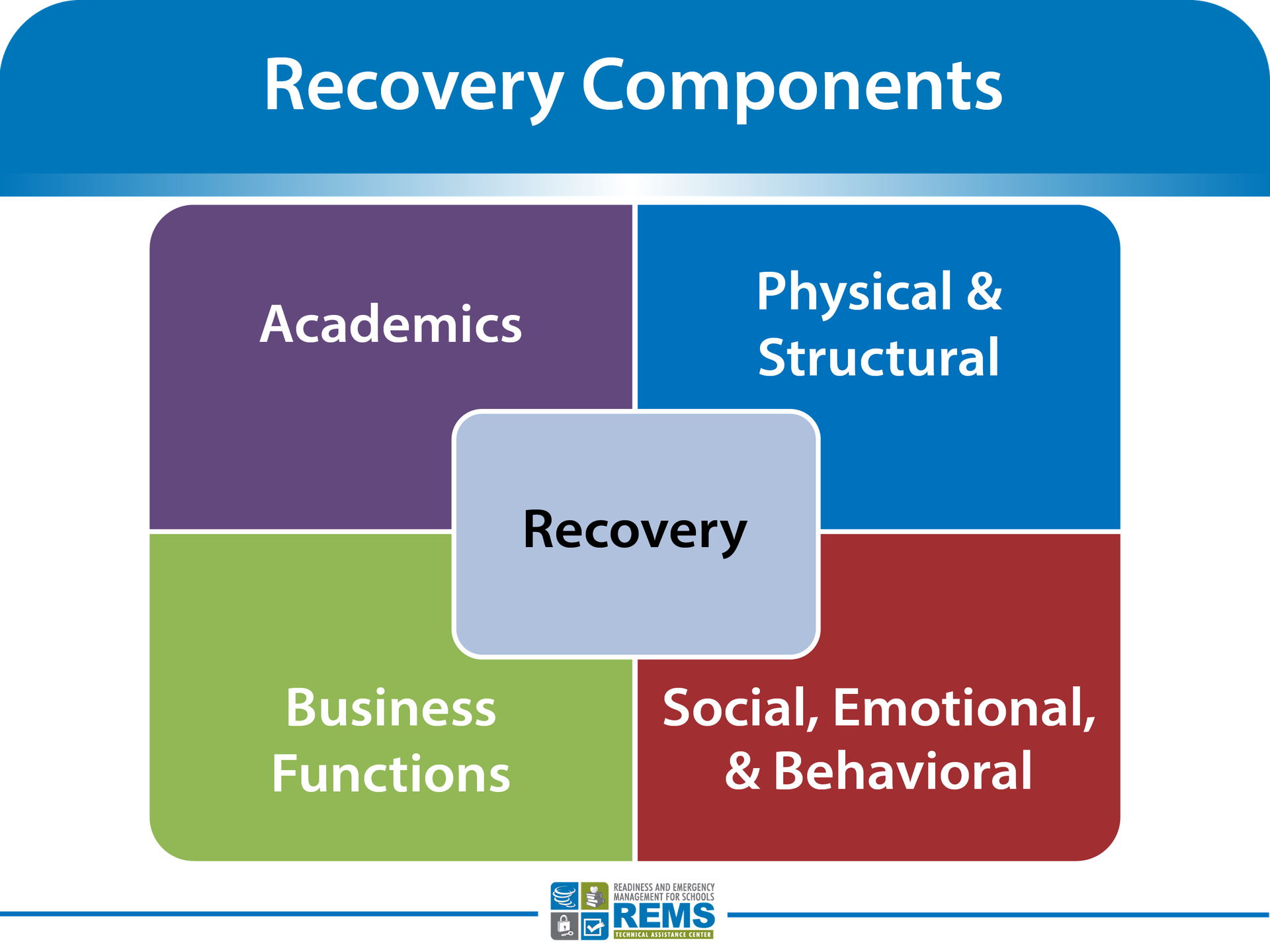Submit Your Best Practices to the U.S. Department of Education’s NEW Safer Schools and Campuses Best Practices Clearinghouse
|
The U.S. Department of Education’s Office of Elementary and Secondary Education, Office of Safe and Supportive Schools is seeking materials for consideration for the new Safer Schools and Campuses Best Practices Clearinghouse (Clearinghouse), a repository for lessons learned and best practices from the field for operating schools and campuses safely during the COVID-19 pandemic. The Clearinghouse provides resources to help address the needs of early childhood programs, preK-12 schools, and colleges and universities by focusing on three primary areas: Safe and Healthy Environments; Providing Supports to Young Children, Students, and Families; and Early Childhood Provider, Teacher, Faculty, and Staff Well-Being, Professional Development, and Supports.
Clearinghouse submissions may include fact sheets, step-by-step guidance, policies or regulations, sample agreements among partners (e.g., between a local education agency and a local health agency, or an employee union), ready-to-implement resources, videos or other media focused on how to implement practices, and descriptions of how you have implemented strategies. However, submissions should not include commercial advertisements, vendor solicitations or products, and editorials. Submitters may include actual materials or direct links to materials.
Submissions should be sent via email to bestpracticesclearinghouse@ed.gov and include the information outlined on the Clearinghouse Website. Upon receipt of your submission, you will be notified whether your submission has been accepted by the Clearinghouse.
Planning and Preparing for Flooding
|
With the changing weather comes natural hazards to be aware of in your state and locality. Spring flooding can result from heavy rain, severe storms, rapid melting of heavy snow, hurricanes, tropical cyclones, dam failure, and tsunamis. The Federal Emergency Management Agency (FEMA) states that 99 percent of U.S. counties were impacted by a flooding event between 1996 and 2019. The National Oceanic and Atmospheric Administration (NOAA) has reported that from 1980 to 2020, tropical cyclones and flooding represent the second and third most frequent billion-dollar disaster event types in the United States (52 and 33 events), respectively. NOAA anticipates this trend of greater frequency of flooding due to growth in vulnerable areas, like coasts and river floodplains, and extreme weather events will continue. That is why education agencies, with their community partners, should consider preparing for floods.
Does your education agency have a Flood Annex in its emergency operations plan (EOP)? If yes, when was it last revised by your community partners, including emergency managers? Does your EOP address some of the common considerations, such as how your education agency will determine when the buildings and grounds are safe for the whole school community to return to after flooding and how mold will be remediated? How does your agency receive and respond to flood alerts and warnings? Are notifications integrated into daily operations, including transportation and athletics? Does your agency reinforce notifications and warnings by disseminating messages to the whole school/campus community? Has your education agency considered possible flooding as part of its annual site assessment process? Do you know if your school/campus is located within a floodplain and which community partner to contact to obtain this information? Has your agency worked with your community partners to consider flood mitigation activities that can be integrated into your facility improvement plans and that are coordinated with local plans? Is your plan informed by historical data on flooding in your area? Does your EOP include training and engagement efforts that your agency could build upon to help create a culture of flood preparedness?
To provide support on this important topic, the REMS TA Center has researched, written, and published three flooding fact sheets for three education agency audiences: K-12 schools and school districts, institutions of higher education (IHEs), and state education agencies. The REMS TA Center also created a resource list to complement these fact sheets; updated the SITE ASSESS mobile application to help you look at your buildings and grounds through the lens of flood preparedness; and created a Topic-Specific Resources page on Natural Hazards, including floods. Featured on this page are Federal partner resources, including those from the National Weather Service (NWS). Visit the NWS Flood Safety Tips and Resources Web page as well as its national Spring Weather Safety campaign that offers infographics, videos, presentations, and social media materials for your school safety teams.
Updating Your Public Health, Medical, and Mental Health Annex During the COVID-19 Pandemic
A variety of emergency events could require the activation of the Public Health, Medical, and Mental Health Annex, which is one of 11 functional annexes recommended in Federal guidance for schools, school districts, and IHEs. In addition to helping build everyday safety to support teaching and learning, this annex can also help education agencies prepare for incidents that involve public health interventions, medical services, and mental health supports. Therefore, it is critical to collaborate with community partners (e.g., emergency medical services, public health, mental health, law enforcement, fire department, emergency management) throughout the entire planning process to ensure that plans and activities are coordinated. The Public Health, Medical, and Mental Health Annex, like all other annexes in a high-quality EOP, should address before, during, and after an emergency; apply additional key planning principles such as considering all settings and all times; and support an all-hazards, all-threats, and all-capabilities approach. Updating and revising an EOP, including its annexes, is a continuous process and can benefit from scenario-based planning. As reopening continues across the country, now may be the time to revisit those critical functional annexes of the EOP and incorporate lessons learned from the past year. Below are some considerations to keep in mind when updating the Public Health, Medical, and Mental Health Annex.
- Preparing for an infectious disease outbreak means having a plan that helps prevent against disease transmission and raise awareness of the protective health measures that members of the whole school/campus community can take to help implement mitigation strategies.
- Establishing partnerships with public health agencies can help education agencies ensure that their plans account for adjusting public health guidelines, such as those issued by local and state public health departments and the Centers for Disease Control and Prevention (CDC).
- Conducting capacity assessments can help capture and build from the resources and expertise of members of the whole school/campus community to implement critical activities, such as education and outreach campaigns to support public health policies, first aid, CPR, psychological first aid, that education agencies can build on and enhance to support overall preparedness.
- Working with planning teams can help schools consider the role of personal protective equipment (PPE) in the school setting and be prepared to order PPE for schools. Schools should also consider modifying exercises and drills to align with public health guidance.
- Considering that students may need a trauma-informed approach can help education agencies support the transition. As the school/campus community transitions back to in-person instruction, learning in a safe and supportive environment will be key for students who have been impacted by the pandemic and other emergency events. Some students may be experiencing homelessness as a result of the pandemic and recent natural hazards; this Webinar addresses how to support students and families experiencing homelessness.
- Considering that many staff may also have experienced loss, illness, or financial hardship can help schools support the well-being of the whole school community, which includes staff. The REMS TA Center offers a Resilience Strategies for Educators Virtual Training by Request as well as a downloadable training module and an archived Webinar on this crucial topic.
The Department and its Federal partners are committed to supporting schools and school districts as they reopen. Find recently released resources from the Department and CDC below:
Memoranda of Understanding With Community Partners for Relocation
When a community-wide or school emergency takes place, such as a natural disaster or active aggressor situation, school leaders may have to relocate students, staff, and visitors to a safe place outside of the school building and grounds.
An essential part of relocation is establishing partnerships to ensure full coverage of safety operations during evacuation and family reunification, for example, securing an off-campus relocation site. When working to formalize a partnership, schools and school districts should work with their general counsel to ensure that the appropriate agreement is created, signed, and used to support the emergency management efforts. A memorandum of understanding (MOU) is a formal, nonbinding agreement between two or more parties that outlines the terms and conditions of an agreed-upon activity. MOUs can help schools and their community partners formalize their unique roles, responsibilities, and protocols in school safety, security, emergency management, and preparedness before, during, and after a possible incident.
A strategic time to create an MOU — or components of the MOU — is when your planning team is going through the six-step planning process as described in the Guide for Developing High-Quality School Emergency Operations Plans (School Guide). By considering formal and informal agreements throughout the planning process, your team can identify a comprehensive set of roles and responsibilities to include in partner agreements. Each step in the planning process highlights components that are beneficial to note and incorporate into MOUs.
- Beginning with Step 1, as partnerships are formed and a recurring meeting is scheduled, the planning team can include this information in partner agreements. In a similar fashion, when hazards, threats, and related assessment programs are designed, key information such as expectations for participation, use of specific tools, and information sharing can be discussed and noted.
- Steps 3 and 4 offer a valuable source of information through scenario-based planning that encapsulates the many ways an incident can unfold with its accompanying responses, resources, personnel, processes (e.g., the National Incident Management System), equipment, and supplies. The identified internal and partner resources that are required for a safe and effective response can be considered for inclusion.
- Step 5 consists of the preparation, review, and editing of the plan in its formal written form. This extends the opportunity to review an agreement against the plan to ensure that both are complete and feasible while bringing to life the K-12 school safety planning principles.
- Step 6 is key, considering that school safety, security, emergency management, and preparedness are a shared responsibility. Promoting the plan, making continual efforts to build and nurture school safety, and raising the awareness of community and individual stakeholders’ groups of their roles and responsibilities before, during, and after a possible emergency are all important elements of preparedness. After all, whether it is a plan or an agreement, the goal is safety, which includes preparedness!
To assist in the process of crafting MOUs, Federal agencies have created writing guides including the MOU writing guide from the U.S. Department of Homeland Security, which provides best practices and details on formulating each of the element involved in an MOU, and the Disaster-Specific MOU guide designed by FEMA, which helps users prepare for and write disaster-specific MOUs between agencies involved in emergency recovery efforts. Consider the following sample questions and resources to support the creation of an MOU that addresses relocation:
- What are the roles of the planning and response team(s) during a relocation? What are the roles of school administrators and staff?
- What resources is the new location responsible for providing?
- What requirements (training, drills, etc.) are associated with participating in this MOU?
- What financial obligations need to be considered by each party in this agreement?
- Who is responsible for providing security at the relocation site?
- What governing structure oversees this MOU and its requirements?
- What rooms/spaces are included in the relocation MOU, and which areas are off limits?
- What assessment tools will be used to help increase the site’s safety and security? To help ensure that the conditions of the building on-site are the same when the school leaves the site?
- How will this MOU be updated, and who has the authority to update it?
- What other related activities and protocols need to be developed, such as accounting for all students, transportation, and reunification strategies?
- How often and when will the MOU be updated in collaboration with community partners?
- What measures need to be taken before, during, and after an emergency to ensure accessibility for all students and staff?
The REMS TA Center created a module on Developing and Enhancing Memoranda of Understanding (MOUs) With Your Community Partners in the Specialized Training Package, which offers training materials for you to use on your own and/or at your site in a virtual or in-person setting. The REMS TA Center Tool Box, which contains sample MOUs created by state and local practitioners, may also offer support on this important topic. Use the Advanced Search feature to search by Type, and select MOU.
Virtual Trainings by Request
Key stakeholders within the whole school/campus community have responded to various challenges in response to the COVID-19 pandemic, which include a need to modify plans to support teaching and learning in a virtual setting. School safety leaders and planning teams at the state, local, and individual school levels have also been required to develop, adjust, and enhance strategies and techniques to offer school safety, security, emergency management, and preparedness professional development and training on a variety of topics. The REMS TA Center recognizes and admires the work that you have done over the past year to help ensure that teaching and learning environments remain safe and supportive, and that key stakeholders who play a role in developing and carrying out EOPs understand their roles and responsibilities.
We want to send a special note of gratitude to all 20 education agencies across 14 states that have invested in efforts to advance their preparedness and host a REMS TA Center Virtual Training by Request (VTBR) in 2021. Like our live Trainings by Request, these interactive trainings are designed to assist education agencies, including state education agencies, regional education agencies, school districts, schools, and IHEs, with their professional development and emergency preparedness capacity-building efforts. We celebrate the resilience of your agencies and educators.

Top Tweets for the Quarter
Follow our official @remstacenter Twitter page to receive news and updates on free trainings and resources for higher ed and school emergency management and preparedness. Our top tweets of the quarter include
Are you working on developing or updating your recovery annex for your #school emergency operations plan? Use our free downloadable training package to help with your effort! https://rems.ed.gov/TrainingPackage.aspx …
We are so pleased to announce the release of a new fact sheet on Masks and Personal Protective Equipment in the #School Setting that offers 6 implementation tips to support the use of face masks & PPE in the K-12 learning setting https://rems.ed.gov/docs/PPEFactSheet_508C.pdf … #FunFactFriday
We recently asked a True or False question on whether you can drive your school’s online preparedness. The correct answer is True! One example is to organize cyber safety training opportunities for school staff, administrators, and teachers. Find more information in our Cyber Safety Quick Links for Protecting Youth TA Snapshot.
Are you interested in fun opportunities to engage with the REMS TA Center? Visit the @remstacenter Twitter page, every Friday, to participate in our poll questions.
|












